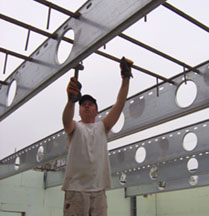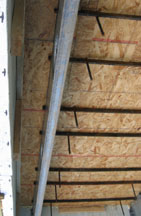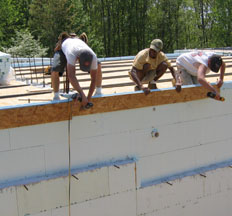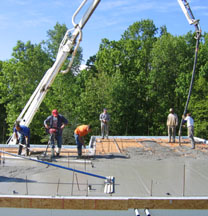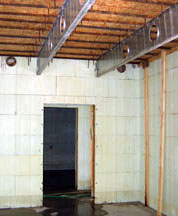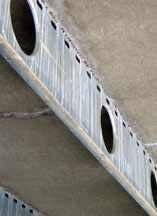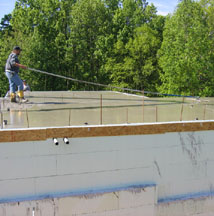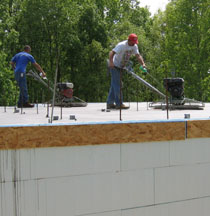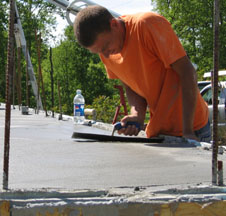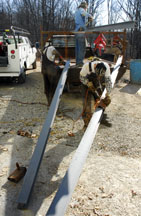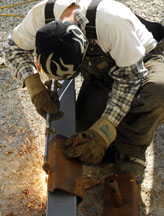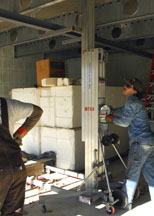 |
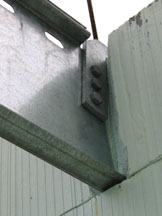 |
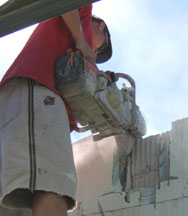 |
|
As Larry lowered the galvanized steel joist (strapped to the boom of his concrete pump truck), Daniel and Ryan guided it into position in 2005. |
A galvanized steel hanger (bolted to the joist) supported the joist on the concrete wall. | Ryan cut a hole into the concrete wall (to line up with the hole in the joist) with a gas-powered circular saw. |
